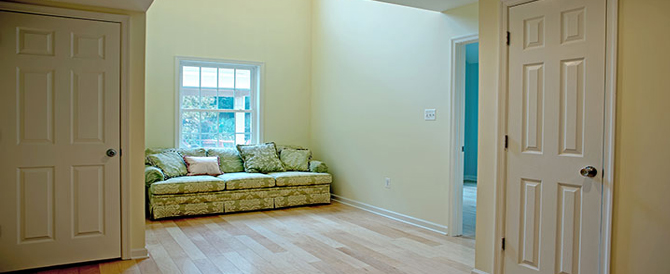Universal home design is the design of products and environments to be usable by all people, to the greatest extent possible, without the need for adaptation or specialized design. The concept is all about creating an attractive, stylish space that everyone (regardless of age, size, or ability) can live in or visit. A home that is designed universally makes it easier for residents to live in, and guests to visit, now and in the future. So universal design promises that the current layout and design will be 100% usable by everyone, even as occupants’ or visitor’s needs and abilities change over time.
The parts of a home that work well for everyone are universal design features. Incorporating them into your home in the pre-construction stage often adds little cost and is usually less expensive than remodeling/augmenting a house when needs and abilities change. For many reasons, having Universal Design features and products in a home makes good sense. These features and products can be so appealing and functional that the only thing anyone notices about them is how easy they are to use!
Essential Universal Design features include:
- No-step entry: At least one step-free entrance into your home — either through the front, back, or garage door—lets everyone, even those using a wheelchair, enter the home easily and safely.
- Single-floor living: Having a bedroom, kitchen, full bathroom with plenty of maneuvering room, and an entertainment area on the same floor makes life convenient for all families.
- Wider doorways and hallways: With your home’s doorways at least 36” wide, you can easily move large pieces of furniture or appliances through your home. Similarly, hallways that are 42” wide and free of hazards or steps let everyone and everything move in, out, and around easily.
- Reachable controls and switches: Anyone — even a person in a wheelchair — can reach light switches that are between 42-48” above the floor, thermostats should be no higher than 48” off the floor, and electrical outlets should be between 18-24” off the floor.
- Easy-to-use handles and switches: Lever-style door handles and faucets, and rocker light switches, make opening doors, turning on water, and lighting a room easier for people of any age and ability.
There are lots of other universal design features and products that many people install in their homes, including:
- Raised front-loading clothes washers, dryers, and dishwashers
- Side-by-side refrigerators
- Easy-access kitchen storage with adjustable-height cupboards and Lazy Susans
- Low or no-threshold stall showers with built-in benches or seats
- Non-slip floors, bathtubs, and showers
- Raised, comfort-level toilets
- Multi-level kitchen countertops with open space underneath, so the cook can work while seated
- Windows that require minimal effort to open and close
- A covered entryway to protect you and your visitors from the elements
- Task lighting directed to specific surfaces or areas
- Easy-to-grasp D-shaped cabinet pulls
- Thresholds that are flush with the floor make it easy for a wheelchair to get through a doorway, and keep people from tripping.
- Good lighting helps people with poor vision, and it helps everyone else see better, too.
If you are interested in universal design and possibly incorporating it into your new home or your existing home, contact the professionals at MDV Remodeling for a fast, free estimate! We are also Certified Aging-in-Place Specialists (CAPS), so we are your go-to contractor for universal design or age-in-place remodels or new construction. We look forward to hearing from you soon!

